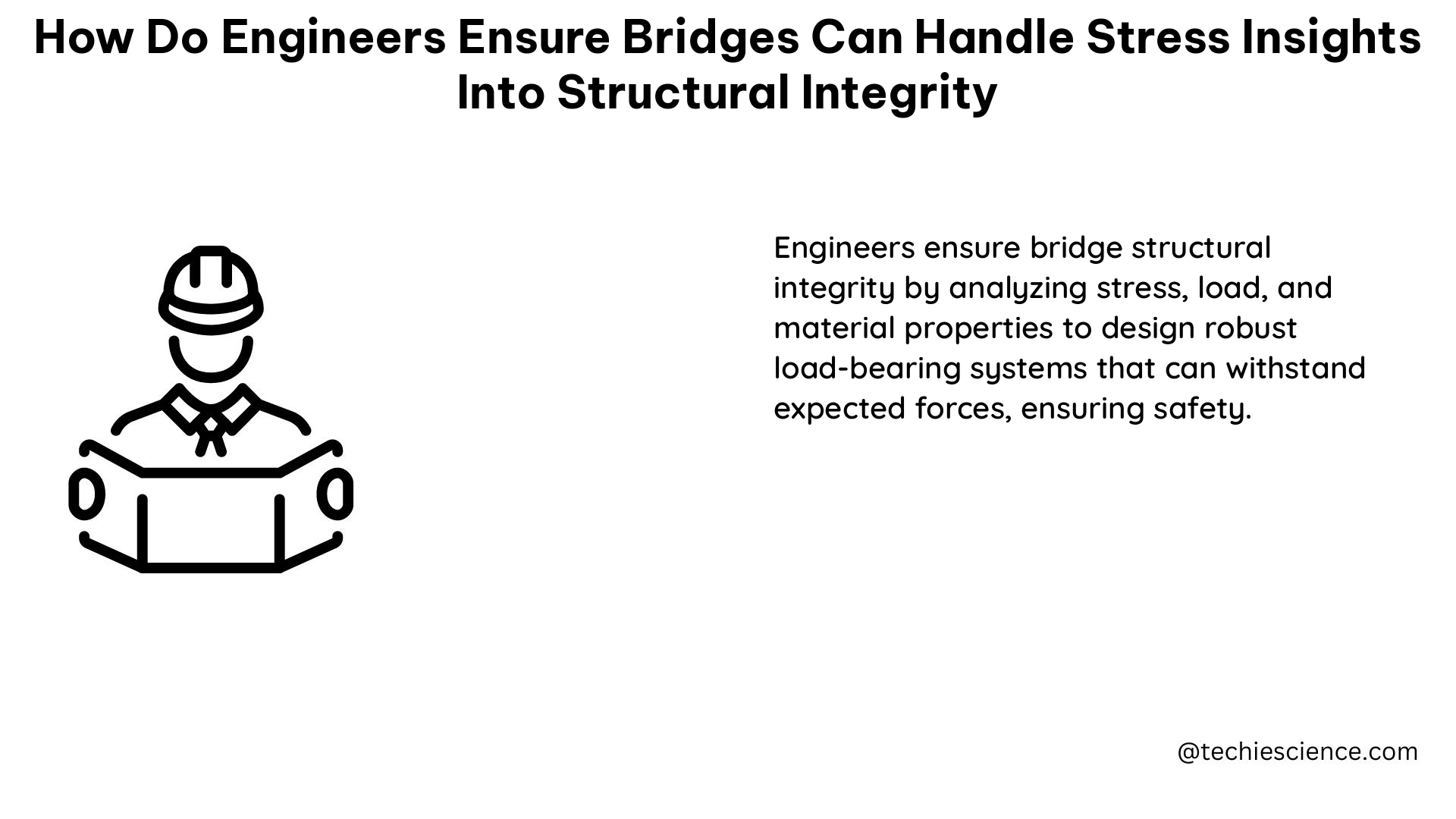Engineers play a crucial role in ensuring the structural integrity and safety of bridges, which are essential infrastructure components that facilitate transportation and connectivity. To guarantee that bridges can withstand the stresses and loads they encounter, engineers employ a comprehensive set of monitoring, inspection, and analysis techniques. This blog post delves into the specific methods and data points that engineers utilize to maintain the structural integrity of bridges.
Monitoring and Inspection: Safeguarding Bridge Structures
Rigorous monitoring and inspection are the cornerstones of ensuring a bridge’s ability to handle stress and maintain its structural integrity. Engineers follow a well-defined schedule and procedures to assess the condition of bridges regularly.
Detailed Inspections Every 6 Years
Every six years, a comprehensive inspection is conducted, where all components of the bridge, including the superstructure, substructure, and foundation, are thoroughly examined. This detailed inspection involves visual assessments, measurements, and non-destructive testing techniques to identify any signs of deterioration, damage, or structural issues.
Checklist Inspections Every 3 Years
In addition to the detailed inspections, engineers perform checklist inspections every three years. During these inspections, a grading system is used to assess the overall condition of the bridge, with a scale ranging from 3 (good) to 1 (poor). This systematic approach helps track the bridge’s performance over time and prioritize maintenance and repair efforts.
Annual Visual Inspections
On an annual basis, engineers conduct visual inspections to monitor any changes or new defects that may have developed since the previous inspections. This regular visual assessment allows for the early detection of potential issues, enabling proactive maintenance and preventive measures.
Maintenance Actions: Keeping Water at Bay
Recognizing the detrimental effects of water on concrete and steel structures, engineers implement yearly and tri-yearly maintenance actions to keep water out of the bridge. These actions may include sealing cracks, repairing expansion joints, and ensuring proper drainage systems are in place to protect the bridge’s structural components from the damaging effects of water intrusion.
Fatigue Measurements and Analysis: Assessing Structural Safety

Bridges are subjected to repeated loading and unloading cycles, known as fatigue, which can gradually degrade their structural integrity over time. Engineers employ advanced techniques to measure and analyze fatigue loads to ensure the bridge’s long-term safety.
Measuring Actual Fatigue Loads
Engineers measure and record the actual fatigue loads at critical points of the bridge, rather than relying solely on design loads. This data helps them assess the bridge’s structural safety more accurately, as the actual fatigue loads experienced by the structure may differ from the theoretical design loads.
Counting Strain Peaks
By counting the peak strains generated by heavy loads passing over the bridge, engineers can determine the actual fatigue loads acting on the structure. This information is crucial in understanding the true stresses the bridge is subjected to, which may deviate from the initial design assumptions.
Moving Average Approach
To precisely count the strain peaks caused by truck traffic, engineers often employ a statistical approach known as the moving average. This technique helps filter out noise and irregularities in the data, providing a more accurate representation of the fatigue loads experienced by the bridge.
Quantifying Traffic and Temperature Effects
Bridges are exposed to a variety of environmental factors, such as traffic patterns and temperature variations, which can significantly impact their structural integrity. Engineers use monitoring data to quantify these effects and assess their impact on the bridge’s fatigue safety.
Monitoring Traffic and Temperature
Engineers collect and analyze data on traffic volume, vehicle types, and temperature fluctuations to understand how these factors influence the fatigue safety of a reinforced-concrete bridge deck. This information is crucial in predicting the progressive damage to the bridge structure over time.
Strain and Temperature Sensors
Strategically placed strain and temperature sensors on the bridge provide valuable data that engineers can use to estimate the cumulative damage to the structure. By monitoring these parameters, engineers can make informed decisions about maintenance, repair, and rehabilitation strategies.
Fire Safety and Structural Integrity
In addition to the stresses and loads from regular traffic and environmental factors, bridges must also be designed to withstand the potential impact of fire hazards, particularly those associated with vehicle-based incidents.
Determining Design Fire Size
Engineers conduct detailed engineering analyses to determine the design fire size and heat release that could be produced by vehicles near or under the bridge. This information is essential in assessing the bridge’s response and resilience to such fire-related threats.
Analyzing Heat Release Rate, Duration, and Fire Geometry
Engineers also evaluate the heat release rate, duration, and geometry of the potential fire scenarios to understand the bridge’s structural response and ensure its integrity in the event of a vehicle-based fire incident.
By employing these comprehensive monitoring, inspection, and analysis techniques, engineers can ensure that bridges can handle the stresses and loads they encounter throughout their lifespan, maintaining their structural integrity and ensuring the safety of the traveling public.
References
- Explain Like I’m Five: How do engineers manage and monitor the structural integrity of bridges?
- Structural Health Monitoring of Bridges: A Comprehensive Review
- Fatigue assessment of reinforced concrete bridge decks under traffic loading
- Structural Integrity of Bridges

The lambdageeks.com Core SME Team is a group of experienced subject matter experts from diverse scientific and technical fields including Physics, Chemistry, Technology,Electronics & Electrical Engineering, Automotive, Mechanical Engineering. Our team collaborates to create high-quality, well-researched articles on a wide range of science and technology topics for the lambdageeks.com website.
All Our Senior SME are having more than 7 Years of experience in the respective fields . They are either Working Industry Professionals or assocaited With different Universities. Refer Our Authors Page to get to know About our Core SMEs.